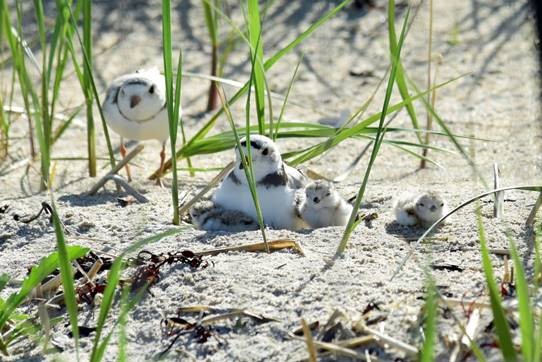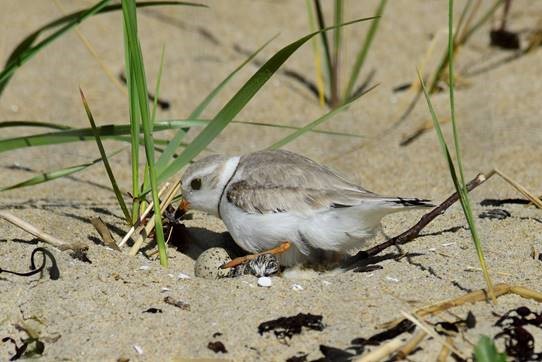ArrayAugust 22, 2022 at 3:03 pm
Only a short 40 years ago, the piping plover population had a grim outlook with a mere seven pairs recorded in the entire state of Maine. These beach habitat specialists are nearly always found in open sandy areas near water. Consequently, these are the same areas that have been heavily developed and used by beachgoers over the years, leading to the sharp decline of the state’s population. After being listed as an Endangered Species under Maine’s Endangered Species Act in 1986, and Threatened under the federal Endangered Species Act in 1985, the proactive partnerships and recovery plans were a vital next step for ensuring this unique species was protected.

For more than 35 years, the implementation of the piping plover recovery program, and the monitoring and management of these endangered birds on 20-25 public and private beaches, has taken a village. Maine Audubon Society (MAS), Maine Department of Inland Fisheries and Wildlife (MDIFW) including vital presence of the Maine Warden Service, U.S. Fish & Wildlife Service National Wildlife Refuge and endangered species staff, U.S. Department of Agriculture Wildlife Services predator management program, municipal staff, landowners, and hundreds of volunteers, have worked diligently to achieve significant accomplishments for these little shorebirds. The continued enactment of the recovery program has eventually led to five repeat record-breaking years in a row.
In 2018, Piping Plovers had 68 nesting pairs, 2019 it increased to 89 nesting pairs and 175 fledglings, 2020 had 98 nesting pairs who fledged 199 chicks, and in 2021 there were 125 nesting pairs and 213 fledged chicks. Now, in 2022, the plovers have done it again with 140 nesting pairs and 221 fledglings so far with another 28 chicks still being monitored! Against all odds, Maine’s piping plovers are making an exceptional comeback, giving those who have been involved over the years a cause for celebration.

And Maine’s piping plovers are critical to the overall success of the species. There are approximately 2,000 pairs along the Atlantic coast, from the Carolinas to Canada. Plovers nesting in the Canadian and the mid-Atlantic part of the range are having low productivity and declining. Piping plovers that breed in the New England states are seeing better success rates, so the whole population depends on these little six-inch-high shorebirds to produce lots of chicks in Maine. With intense and unpredictable hurricanes in wintering areas like the southern U.S., Bahamas, and Caribbean, it may be more essential than ever that our beaches fledge enough young. The Maine Audubon Society’s Coastal Birds Project is responsible for most of the boots-on-the-ground management and monitoring, erecting miles of fencing and signs to improve outreach and education to dog walkers, beach visitors, and landowners alike. Despite improvements in Maine’s piping plover populations, the work is not finished. The collaborative efforts between partners will persist and the ASFWS Atlantic Coast Recovery Plan will continue to be implemented.
Many thanks are due to our network of partners for their ongoing cooperation in support of recovering the Maine population of this charismatic shorebird!